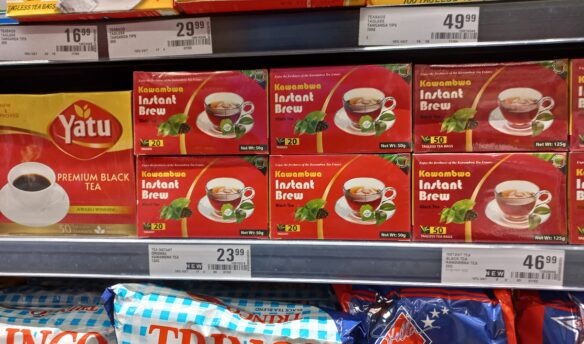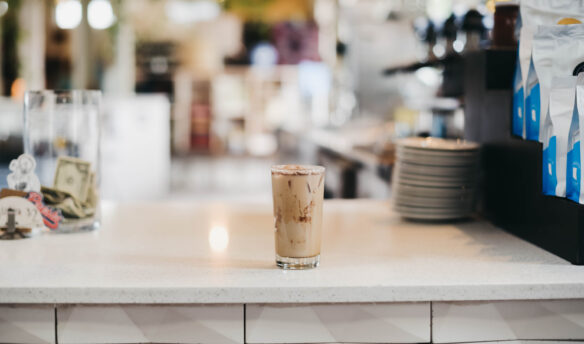[T]here’s been a growing number of tea tasting studios popping up, specifically focusing on loose leaf tea. As the specialty loose leaf tea industry continues to grow at 12 percent annually,* we need more tea lovers helping to build a market of education to ensure this incredible product reaches its potential.
In this young industry, there are no competitors; it’s a symbiotic process, and we’re all in it together. I’ve received dozens of e-mails and comments asking the same question: “How do I get into the tea industry and start a tea company?” Truthfully, it’s easier than you think.
We recently tested this concept, turning one of my houses into a private tea tasting studio in Lake Forest Park, Washington (about fifteen minutes north of Seattle). With just a couple weeks and few hundred dollars, we brought a high-end tea tasting studio to a neighborhood which otherwise wouldn’t have access to quality tea.
Here’s a simple guide to launching a tea tasting studio with quick success and little overhead. Let’s grow the industry together.
1) Become the Tea Expert
Do your homework. Tea is a lifestyle and a craft; you are responsible for enhancing the experience in a tea tasting and studio atmosphere. In a tasting studio, your knowledge and passion will engage new tea drinkers and keep them coming back for more.
One of your best tools to gain tea knowledge is experience. Drink more tea and tap into the network of resources around you. Reach out to local tea house owners and ask for informational interviews. You’d be surprised how many industry experts are willing to take a quick call or meeting and dispense fantastic information. Subscribe to industry publications and tea blogs. Your job is to learn, practice, and hone your skills with customers and friends.
2) Tea Supply
Don’t already have access to a massive supply chain with tea gardens in multiple provinces? No problem! You’re a tea studio, not a supply chain expert with endless capital—yet. Your studio is about providing a quality experience. Pick a tea you’re passionate about and start there, whether it’s Wuyi rock oolong tea, pu-erh, or Japanese sencha. Reach out to small business owners with sourcing experience, pitch your idea, and ask to offer their teas at a discount in exchange for promoting their products for sale or white label (replace their branding with yours). Most companies will be excited to get their tea products into more people’s hands.
3) Establish a Tasting Model
Regardless of whether your goal is to make profit or spread your passion, you’ll need to cover overhead costs. There’s more than one model to choose from when it comes to launching a tasting studio.
Tasting Events: Host weekly tea tasting events and charge per individual, and limit the number of attendees (to enhance value for customers). Sample a unique, expensive tea from an online tea shop and use the fees to pay for it—this creates an opportunity for guests to taste something they wouldn’t likely order for themselves. You can also create a tea small tasting menu. A selection of three to five teas lays a foundation for a memorable tasting event.
Tasting Fee/Bulk Tea Purchase: Offer an open-house, “by appointment” model with a low tasting fee (I suggest starting at three to five dollars). A nominal fee prevents guests from taking advantage of your time and resources. The low fee also encourages both return attendance at higher-fee tasting events and the purchase of teas sampled during the session.
4) Decor
Experience is an essential element of an open studio. Welcome your visitors with a cold-brew green or oolong tea and very mild tea cakes or snacks. Have hot water ready when they arrive (more than one kettle, just to be safe). Find pensive and relaxing music, such as classical or Korean flute music. Sometimes candles are great, but be careful not to overdo it!
Get a large wooden table that can sit five to six people comfortably—solid wood is preferable. Decorate as you like with tea tools; wooden shelves are a great way to display your sampling tea, teaware, and other tea pieces.
A Japanese wood frame and rice paper divider is fantastic for blocking off areas you don’t want your guests to see. We got a cherry wood six-panel divider for our studio, and it works beautifully.
Ikea, Amazon, Costco, and secondhand or antique stores are all great places to get good-looking, affordable pieces for your studio.
5) The Experience
The serving style is up to you, whether you want a water table, teapots, gaiwans, or small or large teacups. The importance lies in the experience, the atmosphere, and high-quality tea. Be prepared to share stories about your passion for tea and how you’ve sourced the day’s offerings. If you’re selling tea, make it clear but not too pushy. No one wants to feel forced to make purchases, and while pressure may temporarily increase sales, you’ll miss valuable opportunities to build relationships with your customers.
6) Bootstrap Business Setup and Marketing
I am a firm believer in testing and failing fast before investing heavily.
Before you purchase a few hundred-dollar teapots and an $800 custom tea table to open your own corporation, try a soft launch of the tasting studio for a month or two first. Start by creating meetups, Facebook groups and events, and offer a couple tea tastings for free or at a discounted price.
Once things pick up and you establish a strong following, you can then get a simple LLC for a small fee and get an EIN number and business license from your city to display in your studio. Then publish your new studio online on Facebook, Yelp, and Google Business. Encourage your first few customers to leave Yelp and Google reviews to build credibility with potential customers.
When you talk to people and ask why they drink tea, they usually will recall a moment in time, their feelings, and the experience. It’s not just the name of tea or its taste, it’s a lifestyle that might just change yours and someone else’s.
We hope to see more studios and make it easier for people to open them, and we hope maybe we or another tea professional will create a franchise tea studio program that can equip tea entrepreneurs with everything they need to make great tea. We are extremely excited to help grow this industry. Please reach out with any questions and we can help get you on your way.
—Jeffrey McIntosh is a regular contributor and owner of Teabook.
















